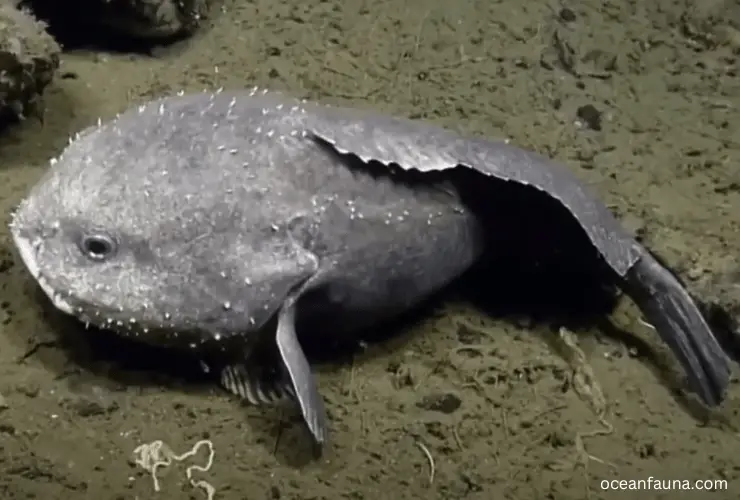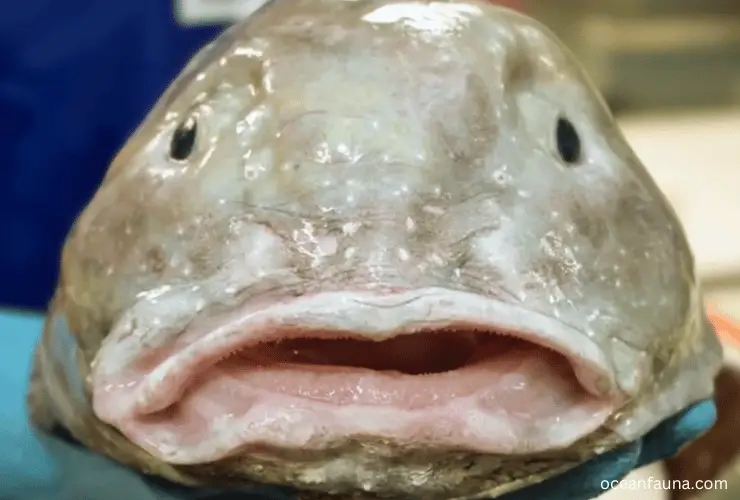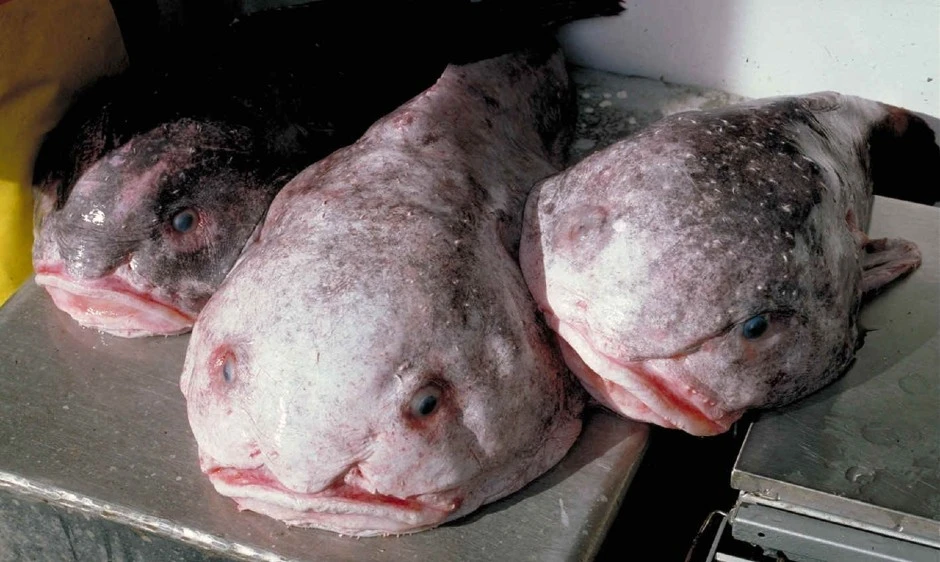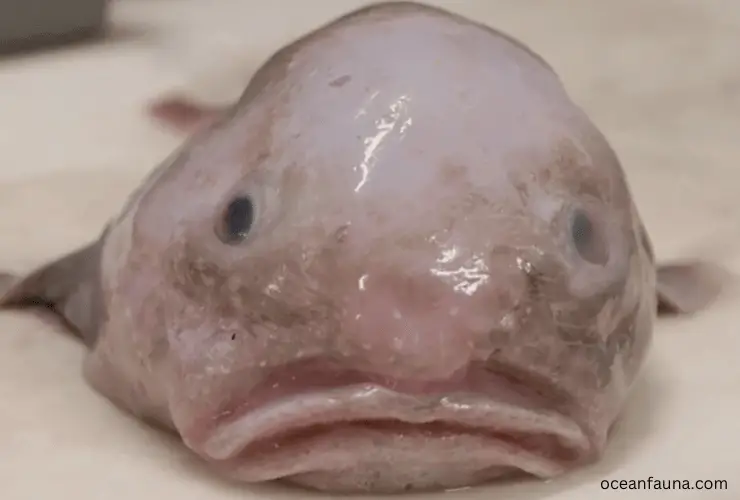Blobfish is a deep-sea creature, so humans do not usually consume it. Because of its gelatinous texture, blobfish meat is thought to be too mushy and tasteless to be enjoyable as a food source. However, the fact is blobfish is edible, and it has a good taste.
In this article, I will discuss in more detail how people cook and eat blobfish as well as the taste of this unique fish.
Can You Eat Blobfish?
Yes, it is possible to eat blobfish only if cooked properly. However, it is not a widely consumed species due to its unusual physical appearance and lack of availability as a food source. Blobfish are typically found in deep waters off the coasts of Australia and New Zealand, making their harvesting and distribution difficult.
While some people have reported that blobfish meat is edible and has a similar taste and texture to monkfish, there is limited information on the safety and nutritional value of consuming this species.

In fact, individuals should consume only small portions of the blobfish, as there are concerns that it may contain high levels of toxic heavy metals.
Furthermore, as with any type of seafood, it is important to ensure that the blobfish is properly cleaned and prepared to avoid the risk of food poisoning. This involves removing internal organs and cooking the meat thoroughly to kill potential bacteria.
Can You Eat Raw Blobfish?
Eating raw blobfish is not advisable. While the blobfish is not poisonous, the gelatinous and acidic nature of its exterior body would make it an unappetizing choice for consumption in its raw form.
Furthermore, consider the lack of flavor that raw blobfish would offer. As many culinary experts will attest, the flavor is a pivotal aspect of any dish, and raw blobfish would simply not provide this.
Also Read: What Do Blobfish Eat and How?
Although some cultures have been known to consume raw seafood as a delicacy, exercise caution with this practice as it can lead to multiple health risks. Raw seafood, including raw blobfish, can contain harmful bacteria and parasites, which can pose serious health risks to individuals who consume it.
What Does a Blobfish Taste Like?
As a blobfish has not been widely consumed, there is limited data on its taste. However, reports from individuals who have tasted the fish indicate that its flavor is sweet and reminiscent of a lobster tail that has been poached in butter. Conversely, some have likened its taste to white fish soaked in tomato sauce.
It should be noted that the texture of blobfish meat is similar to that of monkfish, which is firm and flaky. Monkfish is often compared to lobster for its taste and texture, leading some to speculate that the blobfish’s flavor may be similar.
Despite some reports depicting blobfish as unpleasant-looking, they are actually a rare and endangered species. Thus, consuming blobfish could further harm their already threatened population. To promote aquatic conservation, it is advised to abstain from eating these creatures.
Are Blobfish Toxic?
I can confirm that the blobfish is not toxic in the sense that it does not contain venom or poison. However, its skin has been reported to have an acidic pH level, which can cause skin irritation or burns if one comes in contact with it.

Furthermore, a blobfish’s liver is toxic and contains high levels of a chemical called trimethylamine oxide (TMAO) which is harmful to humans if ingested. Therefore, if one intends to cook a blobfish, it is mandatory to handle it with utmost caution and ensure that the liver is properly removed before consumption.
In fact, due to its unappetizing appearance and the difficulty in properly preparing it for consumption, the blobfish is not a commonly eaten species and is usually caught unintentionally as bycatch in fishing nets.
Are Blobfish Safe To Eat?
If blobfish are cooked properly, then it is safe to eat. They are not venomous, and consumption of their cooked flesh has not resulted in any reported cases of illness or death.
However, their appearance and texture can be off-putting to some people. Blobfish have a gelatinous body and lack a swim bladder, which gives them a soft and squishy texture.
Despite this, blobfish have become a delicacy in some parts of the world, particularly Japan. The flesh of the blobfish is white, flaky, and has a mild flavor, making it comparable to other types of white fish.
It is worth noting that while blobfish are safe to consume, they are not as readily available as other types of fish due to their deep-sea habitat and the fragile nature of their bodies, making them difficult to transport intact.
How To Cook Blobfish?
Cooking blobfish requires a delicate touch and careful preparation to ensure a flavorful and safe culinary experience.
Firstly, remove the acidic exterior skin by making precise cuts along the fish’s body.
Special attention should be given to the removal of the liver, which is toxic and can pose a serious health risk if ingested. Once the skin and liver are completely removed, the blobfish fillet is ready to be cooked.
One popular method for cooking blobfish is searing the underlayer either with a blowtorch or a hot saute pan. This technique allows for a crispy exterior texture while preserving the delicate and tender nature of the meat.
Alternatively, baking blobfish fillets in an oven at a temperature of 350 F for up to 20 minutes can yield equally delicious results. When the meat turns white, it is a clear indication that it is fully cooked and ready to eat.

For a more sophisticated and nuanced approach, poaching blobfish is another option that highlights this surprisingly delicious fish’s rich and subtle flavor.
The meat is cooked gently and evenly by immersing the fillets in a lightly simmering liquid, such as white wine or fish stock. This method is particularly useful when preparing larger filets, as poaching ensures even cooking throughout the entire piece.
Why Don’t Chefs Consider Blobfish as Food?
Chefs do not consider blobfish as a culinary delicacy because of their unique physical characteristics. Blobfish’s gelatinous flesh, which is devoid of bones and muscles, is not particularly palatable. The flesh’s peculiar texture makes it challenging to cook and prepare into a dish that satisfies discerning taste buds.
Additionally, the unusual flesh of the blobfish is ideally suited to its natural habitat, where it helps the fish float at the bottom of the sea and digest its food.
Also Read: Are Blobfish Real? 20 Incredible Facts of Blobfish Underwater
Furthermore, their size and shape make them difficult to catch using conventional fishing methods. Even if caught, the fragile and delicate nature of the blobfish makes it unsuitable for shipping and handling over long distances, making them impractical to trade.
Remember that the blobfish’s close relative, the sculpin fish, is edible, but the process of preparing it for consumption is entirely different. Sculpin fish, although also having a unique taste, are typically filleted, with their venomous spines removed before they are prepared for the table.
In contrast, blobfish’s gelatinous consistency makes filleting and spines removal impractical, contributing to why chefs generally do not consider them food.
Should You Eat Blobfish?
From my side, it is a big no. No one should consume blobfish. There are so many reasons for that. Let’s see one by one.
First and foremost, only about 420 blobfish are left in the wild, meaning overfishing could lead to their extinction.
Moreover, the habitat of the blobfish is incredibly deep, so catching them intact can be difficult and time-consuming. This means that not only are the numbers of blobfish limited, but consuming them could also contribute to overfishing and potentially lead to their extinction.
Additionally, the flesh of the blobfish is gelatinous, which presents difficulties when it comes to cooking. This texture can be unappetizing and make the experience of consuming the fish unpleasant.
Furthermore, blobfish lack bones and muscles, making it challenging to fillet them. The lack of structure in their anatomy makes the removal of edible portions a laborious process.
Also, the liver of the blobfish must be removed before consumption, as it can be toxic to humans. Ingesting the liver could lead to serious health complications, making consuming blobfish unnecessary.
So, for all these reasons, it’s best to avoid consuming blobfish and help preserve this fragile species. The best way to appreciate the beauty of the blobfish is by admiring them in aquariums or nature documentaries. With this, we can ensure that the species will remain around for future generations to enjoy.
Conclusion
I want to clarify that this article does not promote the consumption of blobfish. As a researcher on marine biodiversity, I simply provide information on how to cook blobfish safely if you want to eat it. However, it is recommended that we do not eat them and instead promote conservation efforts to protect these creatures.


1 thought on “Can You Eat Blobfish? [Is it Safe to Eat?]”